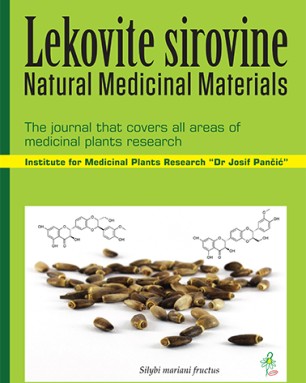Institute for Food Technology and Biochemistry, Faculty of Agriculture, University of Belgrade , Belgrade , Serbia
Institute for Medicinal Plants Research "Dr. Josif Pančić" , Belgrade , Serbia
Institute for Medicinal Plants Research "Dr. Josif Pančić" , Belgrade , Serbia
Institute for Medicinal Plants Research "Dr. Josif Pančić" , Belgrade , Serbia
Institute for Medicinal Plants Research "Dr. Josif Pančić" , Belgrade , Serbia
Institute for Medicinal Plants Research "Dr. Josif Pančić" , Belgrade , Serbia
Institute for Food Technology and Biochemistry, Faculty of Agriculture, University of Belgrade , Belgrade , Serbia
Medicinal plant extracts have a broad antimicrobial activity, including antiviral effects. In our study, eleven dry extracts of ten different medicinal plants prepared with two solvents (5%, dimethyl sulfoxide (DMSO) and 30% ethanol in 5% DMSO) in different concentrations have been examined for anti-norovirus activity. The reduction of norovirus >1 log10 genome equivalents has been obtained with 1 mg/mL of Aronia melanocarpa leaf extract, dried wine Prokupac and Hypericum perforatum extract. Some of the observed extracts i.e. Hypericum perforatum, Aronia melanocarpa fruit extract and Punica granatum peel extract showed better activity when dissolved in 30% ethanol with 5% DMSO. All results of anti-noroviral activity of tested extracts which achieved <0.5 log10 genome equivalents were considered as not effective.
This is an open access article distributed under the Creative Commons Attribution License which permits unrestricted use, distribution, and reproduction in any medium, provided the original work is properly cited.

The statements, opinions and data contained in the journal are solely those of the individual authors and contributors and not of the publisher and the editor(s). We stay neutral with regard to jurisdictional claims in published maps and institutional affiliations.